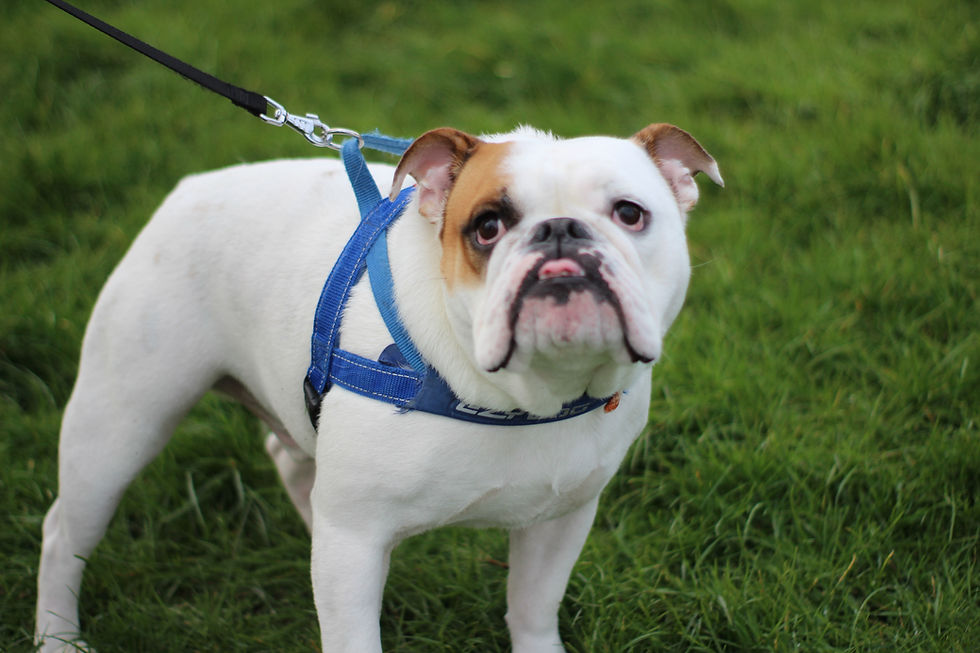The Power of Structure - part three
- engageddogtrainer
- Nov 5
- 3 min read
Daily Routines That Make Life Easier (For Both Ends of the Leash)
Part 3 of the “Power of Structure” Series
One of the most comforting things we can offer a dog is a predictable rhythm to their day. Routines don’t just keep life organized — they create emotional stability. They help dogs understand when it’s time to move, when it’s time to rest, when to expect activity, and when the world is quiet.
Dogs who know the flow of their day carry less tension. They settle more easily. They make better choices. And perhaps most importantly, they stop feeling like they’re responsible for managing everything around them.
Daily routines are one of the simplest forms of structure, but they’re also some of the most powerful.

Why Routines Work
Routines aren’t about turning your home into boot camp. They’re about predictable patterns: same general time, same flow, same behaviors. When your dog knows what to expect, they spend less energy scanning, worrying, or anticipating what might happen next.
This becomes especially helpful for:
Puppies
Newly adopted dogs
Anxious or sensitive dogs
Overexcited, busy-minded dogs
Multi-dog households
Predictability builds confidence, and confident dogs behave more calmly.
Anchoring the Day With Consistent Moments
Here are the daily patterns that influence your dog’s behavior more than most people realize:
1. Feeding Routines
Consistent feeding times set an internal rhythm. Dogs quickly learn when meals happen, which reduces begging, pacing, scavenging, and food-related anxiety. It also stabilizes digestion and potty timing — a big win for dogs still adjusting.
2. Potty Patterns
Predictable potty breaks prevent accidents, reduce stress, and create confidence. Dogs feel secure when they know when the opportunity will come — instead of holding it anxiously or signaling nonstop.
3. Structured Walks
Walks don’t have to be rigid, but they should have purpose. Starting the walk with calmness sets the tone. A predictable walking pattern—moving together, staying connected—helps dogs stay grounded and reduces reactivity.
Consistency = clarity.Clarity = confidence.
4. Planned Rest Time
Many dogs don’t naturally settle in busy homes. Building in calm periods throughout the day — crate time, place time, or quiet lounging in a low-traffic area — teaches dogs how to switch off. Rest is part of emotional regulation, especially for overstimulated dogs.
5. Doorway & Transition Habits
“Calm before exiting.”“Wait before entering.”“Pause before rushing the threshold.”
These small rituals prevent chaos and start to teach patience, impulse control, and trust.
Building the Routine Doesn’t Mean You Lose Flexibility
Some owners fear that routines will make life rigid. But the truth is, the more structured your dog’s baseline is, the more flexible they become. Why?
Because structure builds emotional stability.A stable dog can handle change.
Miss a walk? They recover.Guests arrive unexpectedly? They adapt.Schedules shift? They don’t fall apart.
Structure builds resilience.
The Routine Shapes You, Too
Daily structure doesn’t just help your dog — it helps you feel calmer and more in control. Instead of reacting to problems, you start preventing them. You become proactive instead of frustrated. Over time, you’ll find yourself navigating challenges with more patience and clarity, because the routine supports both sides of the partnership.
The Takeaway
At Engaged Dog Training, we see the power of routine every day. When dogs know the rhythm of their world, they settle more quickly, learn more willingly, and behave more confidently. Structure isn’t about rigidity — it’s about giving your dog the emotional scaffolding they need to feel secure.
A predictable day doesn’t make a dog boring. It makes them balanced.
Because when your dog knows when to move, when to rest, and how to transition calmly, life becomes easier. For them. For you. For everyone in the home.

Comments